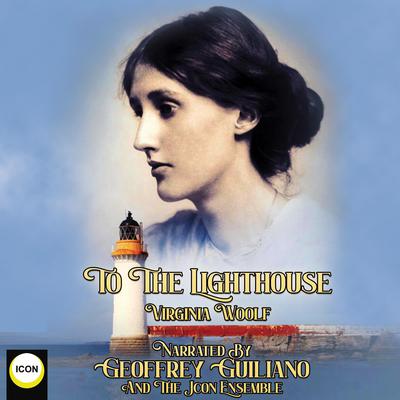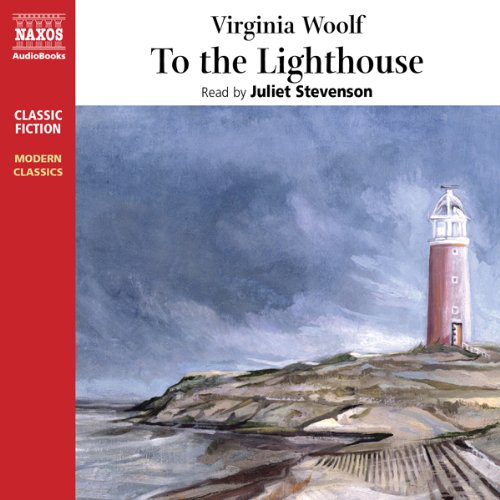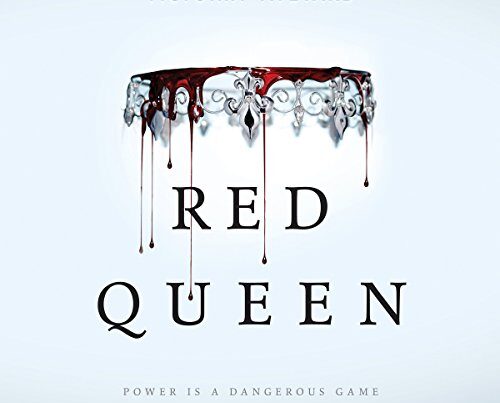The “To the Lighthouse” audiobook by Virginia Woolf brings her classic novel to life. It explores family dynamics and complex human emotions.
Virginia Woolf’s “To the Lighthouse” is a timeless piece of literature that delves into the intricacies of family relationships and personal growth. Set against the backdrop of the Ramsay family’s summer home, the narrative shifts through various perspectives, providing deep insights into each character’s mind.
The audiobook format enhances this experience, allowing listeners to immerse themselves in Woolf’s lyrical prose and stream-of-consciousness style. This novel remains a significant exploration of themes like time, loss, and the search for meaning in everyday life. Ideal for both new readers and seasoned Woolf enthusiasts, the audiobook offers a captivating journey through one of modernist literature’s most esteemed works.
Introduction To Virginia Woolf’s Masterpiece
“To the Lighthouse” is a celebrated novel by Virginia Woolf. This book, released in 1927, showcases Woolf’s innovative narrative style. The audiobook version brings her words to life, making it accessible to a wider audience. This masterpiece delves deep into human consciousness and time’s passage.
Early Reception And Significance
Upon its release, “To the Lighthouse” received critical acclaim. Critics praised Woolf’s unique approach to storytelling. Her use of stream-of-consciousness was groundbreaking. The novel’s significance lies in its exploration of inner thoughts and feelings. It marked a departure from traditional storytelling. Woolf’s work influenced many modernist writers.
The audiobook format has made it even more popular. Listeners can now appreciate the rich language and intricate details. This format also highlights the novel’s rhythmic prose. “To the Lighthouse” remains a cornerstone in literature studies. Its themes and techniques are still relevant today.
Main Themes Explored
“To the Lighthouse” delves into several profound themes. The passage of time is a central theme. Woolf examines how time affects individuals and families. The novel also explores the nature of perception. Characters see events differently, highlighting subjective reality.
Gender roles are another significant theme. Woolf critiques the traditional roles assigned to men and women. She portrays strong female characters who challenge societal norms. The search for meaning is a recurring motif. Characters grapple with their purpose and existence.
The audiobook brings these themes to life through expressive narration. Each character’s voice adds depth to the story. Listening to the audiobook offers a new perspective on Woolf’s masterpiece. It enhances understanding and appreciation of her work.

Character Analysis
The characters in Virginia Woolf’s To the Lighthouse are rich and complex. Each character represents different facets of human nature. The audiobook brings these personalities to life, engaging listeners deeply. Let’s delve into the main characters.
Mrs. Ramsay: The Matriarch
Mrs. Ramsay is the heart of the story. She embodies warmth, love, and kindness. Her presence is a calming force in the Ramsay household. She cares deeply for her family and guests. Her nurturing nature helps her maintain harmony.
Mrs. Ramsay is also a symbol of traditional femininity. She focuses on her family’s needs and well-being. Her character contrasts with more modern, independent women. Her influence and love shape the lives of those around her.
Mr. Ramsay: The Scholar
Mr. Ramsay is a philosopher and scholar. His character is driven by his need for intellectual validation. He often doubts his own achievements. This insecurity creates tension in his relationships.
Mr. Ramsay’s stern and demanding nature contrasts with Mrs. Ramsay’s warmth. He struggles to balance his academic pursuits with his family’s needs. His character represents the conflict between personal ambition and family responsibilities.
Lily Briscoe: The Artist
Lily Briscoe is a painter and represents artistic freedom. She challenges traditional gender roles. Her character symbolizes the struggle for creative expression. Lily’s journey reflects her quest for identity and independence.
Lily forms a close bond with Mrs. Ramsay. This relationship influences her art and personal growth. Her character highlights the importance of self-discovery and artistic integrity.
Through Lily’s perspective, we see the impact of Mrs. Ramsay’s death. Her character development illustrates the enduring influence of the past on the present.
Narrative Style And Structure
Virginia Woolf’s To the Lighthouse audiobook offers a unique experience. The novel’s narrative style and structure stand out. Woolf’s innovative techniques captivate listeners. The story unfolds through multiple perspectives. This creates a rich, layered narrative. Below, we explore two key aspects of this narrative style.
Stream Of Consciousness Technique
Woolf uses the stream of consciousness technique masterfully. This technique dives into characters’ thoughts. It reveals their inner lives in real-time. The audiobook captures this beautifully. Listening to characters’ thoughts feels intimate and personal. Their emotions and reflections flow naturally.
The stream of consciousness technique blurs the line between dialogue and thought. It creates a seamless narrative experience. Listeners feel immersed in the characters’ minds. This technique enhances the emotional depth of the story. It makes each character’s perspective unique and vivid.
Time And Memory
Time and memory play crucial roles in the novel. Woolf’s narrative structure reflects this. The story spans over a decade. Yet, it focuses on specific moments in time. This approach highlights the significance of memory. Characters’ past experiences shape their present lives.
The audiobook emphasizes these themes effectively. The shifts in time are clear and engaging. Listeners understand how past events influence characters. Memories are not just recollections but integral to the narrative. This structure adds depth to the story. It shows how time and memory intertwine.

Symbolism In ‘to The Lighthouse’
Virginia Woolf’s ‘To the Lighthouse’ is rich in symbolism. The novel’s key symbols are the Lighthouse, the Window, and the Painting. Each symbol adds depth and meaning to the story. This blog post explores these symbols in detail.
The Lighthouse
The Lighthouse is central to the novel. It represents hope, guidance, and an unattainable goal. Characters see the Lighthouse differently. For Mr. Ramsay, it symbolizes intellectual achievement. For Mrs. Ramsay, it represents emotional fulfillment. The Lighthouse stands tall, a silent witness to their struggles and desires.
The Window
The Window is another significant symbol. It represents a barrier between characters and the outside world. Mrs. Ramsay often looks through the window. She sees the changing sea and sky. The window shows the passage of time and life’s fleeting nature.
The Painting
The Painting is crucial to Lily Briscoe’s character. Her painting represents artistic struggle and self-expression. She battles with doubts and societal expectations. The act of painting is her journey to self-discovery. The completed painting is a symbol of her personal achievement.
Themes And Motifs
Virginia Woolf’s “To the Lighthouse” audiobook presents deep themes and motifs. These elements make the story rich and engaging. They add layers of meaning to the narrative.
The Search For Meaning
The characters in the story search for meaning in life. They reflect on their existence and purpose. Lily Briscoe seeks meaning through her art. Mrs. Ramsay searches for meaning in her family life.
This quest for meaning drives the characters’ actions. It shapes their interactions and relationships.
Gender Roles And Expectations
Gender roles play a significant part in the story. Men and women have distinct roles and expectations. These roles affect their behavior and choices.
Mrs. Ramsay embodies the traditional female role. She cares for her family and home. Mr. Ramsay represents the male role. He focuses on his work and intellect.
The characters struggle with these roles. They seek to understand and sometimes challenge them.
The Passage Of Time
Time is a key motif in “To the Lighthouse.” The story spans over ten years. It shows the impact of time on the characters.
The lighthouse itself is a symbol of time. It stands unchanged while the world changes around it. The passage of time affects the characters’ lives and relationships.
They reflect on their past and look towards the future. This motif adds depth and realism to the story.
| Theme/Motif | Characters Involved | Impact on Story |
|---|---|---|
| The search for meaning | Lily Briscoe, Mrs. Ramsay | Drives characters’ actions and relationships |
| Gender roles and expectations | Mrs. Ramsay, Mr. Ramsay | Shapes behavior and choices |
| The passage of time | All characters | Reflects on past and future |
Critical Analysis
Listening to the audiobook of “To the Lighthouse” by Virginia Woolf offers a unique experience. The audiobook brings out the novel’s rich narrative and intricate details. Let’s delve into its deeper meanings and themes through critical analysis.
Feminist Readings
Virginia Woolf’s work often explores the roles of women in society. To the Lighthouse is no exception. The novel highlights the struggles women face in a male-dominated world.
Mrs. Ramsay represents the traditional woman. She is nurturing and self-sacrificing. In contrast, Lily Briscoe symbolizes the modern woman. She seeks independence and artistic freedom.
This contrast showcases the tension between old and new gender roles. Woolf’s portrayal of these characters invites readers to reflect on women’s evolving roles.
Postmodern Perspectives
To the Lighthouse also reflects postmodern themes. Woolf challenges traditional narrative structures. The novel’s fragmented and non-linear timeline exemplifies this.
Characters’ inner thoughts and perceptions blur the lines between reality and imagination. This narrative technique emphasizes the subjective nature of human experience.
The use of stream-of-consciousness writing immerses listeners in the characters’ minds. It provides a deep understanding of their emotions and thoughts.
Woolf’s innovative style invites listeners to question the nature of reality and truth. The audiobook format enhances this experience by bringing these elements to life audibly.
Adaptations And Influence
Virginia Woolf’s “To the Lighthouse” is a literary classic. The audiobook format brings this masterpiece to life. This section explores its adaptations and influence. We will examine the audiobook rendition. We will also delve into its impact on contemporary literature and culture.
Audiobook Rendition
The audiobook of “To the Lighthouse” offers a unique experience. The narrator’s voice adds depth to Woolf’s prose. Listeners can feel the emotion in every sentence. The soundscape enhances the setting of the story. Background sounds immerse the listener in the world Woolf created. This format is ideal for those who prefer auditory learning. It brings a new dimension to this literary classic.
| Aspect | Details |
|---|---|
| Narration Style | Engaging and emotional |
| Sound Quality | High definition |
| Accessibility | Available on various platforms |
Influence On Contemporary Literature And Culture
“To the Lighthouse” has left a lasting impact. Contemporary writers draw inspiration from Woolf’s work. Her stream-of-consciousness technique is widely used. It has influenced modernist literature significantly. Woolf’s themes of time, memory, and identity resonate today. The novel’s portrayal of family dynamics is timeless.
- Stream-of-consciousness technique
- Themes of time and memory
- Impact on modernist literature
- Timeless portrayal of family dynamics
Woolf’s influence extends beyond literature. Her work has inspired films, plays, and artworks. “To the Lighthouse” has been adapted into various formats. These adaptations keep Woolf’s legacy alive. They introduce her work to new audiences.

Frequently Asked Questions
What Is “to The Lighthouse” About?
“To the Lighthouse” explores themes of family, time, and change through the Ramsay family’s visits to the Isle of Skye.
Who Narrates The “to The Lighthouse” Audiobook?
The “To the Lighthouse” audiobook is narrated by various talented voice artists, bringing Virginia Woolf’s characters to life.
How Long Is The “to The Lighthouse” Audiobook?
The “To the Lighthouse” audiobook typically runs for around 7 to 8 hours, providing an immersive experience.
Where Can I Find The “to The Lighthouse” Audiobook?
You can find the “To the Lighthouse” audiobook on platforms like Audible, Apple Books, and Google Play.
Conclusion
Experience the timeless beauty of Virginia Woolf’s “To the Lighthouse” through its captivating audiobook. This classic novel, now more accessible than ever, offers profound insights into human nature. Let the expertly narrated audiobook transport you to another era. Don’t miss the chance to enrich your literary journey with this masterpiece.



